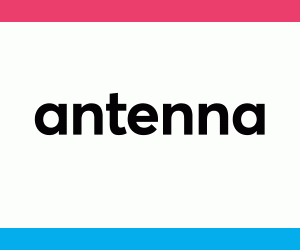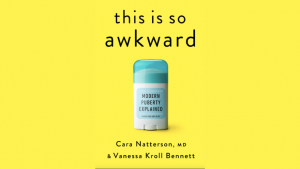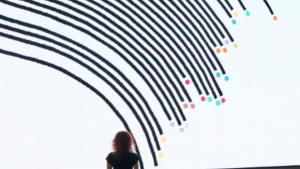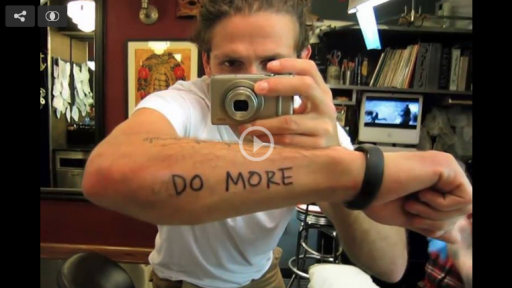Part of the Project
Download options

Freyja Sewell describes her project as a medical training device which allows people to see what’s happening to their minds during meditation, not with numbers, charts or good-job-stars but with what she calls, soft data feedback.
Mind Mirror is made up of two main components. The first part is the Neural Lace, a piece of wearable technology that uses 32 sensors on the head to monitor brain activity. Placed on the user’s head, Sewell says the lace is lightweight and comfortable.
The second crucial element is the Bio-Data feedback. This is where the biological data taken from the brain is presented back to the user in both visual and audio format. The feedback is designed be in a soft, non-addictive, non-competitive format that guides the user as they learn.
“This understanding can be used as part of a training program, helping people to improve and hone their ability to move in and out of meditative states,” she writes. Sewell envisions that this understanding will put more control in the hands of the user.
Recent research tells us that more than 200 meditation apps for smartphones launched over the past three years. “It’s almost like a bit of jiu-jitsu,” said Alex Tew, the CEO of meditation app, Calm. “You use the device’s power against itself in order to fix some of the issues that it’s causing,” he told Wired.
Leading the pack are apps called Calm and Headspace, each offering their own unique spin on assistive technologies that help you take time out, monitor your sleep, monitor your stress, and keep track of how long and when you meditate. They also offer guided meditation, playlists that help one sleep and sleep stories.
Headspace is even making an official healthcare play, according to the Wall Street Journal. They’re seeking Food and Drug Administration in the US to become the first prescription medication app for chronic illnesses.
But is this a good thing? Its popularity and part of its potential harmfulness comes down to numbers, says graduate designer from Brighton University, Freyja Sewell.
“Numbers are addictive. It’s been shown. [For instance] when people push their bodies further than they should to meet their fitbits demands,” she explained.
She isn’t far off. The majority of meditation assistive apps rely on the same strategy of gamification that other apps use to keep users locked in - think daily targets, unlocking new features and paying for more advanced lectures and series once you’ve explored the free version.
As the numbers have shown - Calm and Headspace both hit 1 milllion paid subscribers in June last year - the gamification meets meditation strategy is successful. But Sewell’s approach is a bit different and it remains to be seen whether it’ll grab the attention of mainstream audiences the way its predecessors have.
This project was created in collaboration with MIT research associate Professor Judson Brewer, author of The Craving Mind. Sewell presented her project at the annual antenna Conference at Dutch Design Week in October last year.
Antenna brings together 20 design graduates from around the world who, looking at the problems we have today, design possible solutions for the future.
More unmissable talks on the future of design:
Scribble is a touch-activated joystick for semi-autonomous driving








